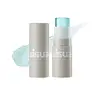What's inside
What's inside
 Key Ingredients
Key Ingredients

 Benefits
Benefits

 Concerns
Concerns

 Ingredients Side-by-side
Ingredients Side-by-side

Helianthus Annuus Seed Oil
EmollientPolyglyceryl-2 Triisostearate
EmulsifyingEuphorbia Cerifera Cera
AstringentButyrospermum Parkii Butter
Skin ConditioningPrunus Amygdalus Dulcis Oil
Skin ConditioningPyrus Malus Seed Oil
EmollientOctyldodecanol
EmollientMicrocrystalline Wax
Emulsion StabilisingEclipta Prostrata Extract
Skin ConditioningMelia Azadirachta Leaf Extract
Skin ConditioningGlycyrrhiza Uralensis Extract
EmollientMoringa Oleifera Seed Oil
EmollientCandida/Garcinia Cambogia Ferment
Oryza Sativa Germ Oil
EmollientSchisandra Chinensis Fruit Extract
Skin ConditioningCurcuma Longa Root Extract
MaskingLithospermum Erythrorhizon Root Extract
Skin ConditioningCanola Oil
EmollientCaesalpinia Spinosa Fruit Extract
Skin ProtectingChlorella Vulgaris Extract
Skin ConditioningKappaphycus Alvarezii Extract
Skin ConditioningDaucus Carota Sativa Seed Oil
EmollientHydrolyzed Collagen
EmollientAlthaea Rosea Flower Extract
Skin ConditioningDaucus Carota Sativa Root Extract
Skin ConditioningTocopherol
AntioxidantAdenosine
Skin ConditioningWater
Skin ConditioningButylene Glycol
Humectant1,2-Hexanediol
Skin ConditioningBeta-Carotene
Skin ConditioningTocopheryl Acetate
AntioxidantEthylhexylglycerin
Skin ConditioningSoluble Proteoglycan
Skin ConditioningSodium Dna
Skin ConditioningBHT
AntioxidantParfum
MaskingBenzyl Salicylate
PerfumingBenzyl Benzoate
AntimicrobialButylphenyl Methylpropional
PerfumingHexyl Cinnamal
PerfumingHydroxycitronellal
PerfumingCitronellol
PerfumingAlpha-Isomethyl Ionone
PerfumingGardenia Florida Fruit Extract
Skin ConditioningHelianthus Annuus Seed Oil, Polyglyceryl-2 Triisostearate, Euphorbia Cerifera Cera, Butyrospermum Parkii Butter, Prunus Amygdalus Dulcis Oil, Pyrus Malus Seed Oil, Octyldodecanol, Microcrystalline Wax, Eclipta Prostrata Extract, Melia Azadirachta Leaf Extract, Glycyrrhiza Uralensis Extract, Moringa Oleifera Seed Oil, Candida/Garcinia Cambogia Ferment, Oryza Sativa Germ Oil, Schisandra Chinensis Fruit Extract, Curcuma Longa Root Extract, Lithospermum Erythrorhizon Root Extract, Canola Oil, Caesalpinia Spinosa Fruit Extract, Chlorella Vulgaris Extract, Kappaphycus Alvarezii Extract, Daucus Carota Sativa Seed Oil, Hydrolyzed Collagen, Althaea Rosea Flower Extract, Daucus Carota Sativa Root Extract, Tocopherol, Adenosine, Water, Butylene Glycol, 1,2-Hexanediol, Beta-Carotene, Tocopheryl Acetate, Ethylhexylglycerin, Soluble Proteoglycan, Sodium Dna, BHT, Parfum, Benzyl Salicylate, Benzyl Benzoate, Butylphenyl Methylpropional, Hexyl Cinnamal, Hydroxycitronellal, Citronellol, Alpha-Isomethyl Ionone, Gardenia Florida Fruit Extract
C12-15 Alkyl Benzoate
AntimicrobialOctyldodecanol
EmollientHydrogenated Polyisobutene
EmollientIsotridecyl Isononanoate
EmollientDibutyl Lauroyl Glutamide
Skin ConditioningDibutyl Ethylhexanoyl Glutamide
Skin ConditioningParfum
MaskingDiisostearyl Malate
EmollientLinalool
PerfumingBorago Officinalis Seed Oil
EmollientPhenoxyethanol
PreservativeSclerocarya Birrea Seed Oil
HumectantSilica Dimethyl Silylate
EmollientHelianthus Annuus Seed Oil
EmollientCalcium Titanium Borosilicate
AbrasiveLimonene
PerfumingTitanium Dioxide
Cosmetic ColorantCocos Nucifera Oil
MaskingCalendula Officinalis Flower
Skin ConditioningCI 42090
Cosmetic ColorantGeraniol
PerfumingCI 19140
Cosmetic ColorantTin Oxide
AbrasiveC12-15 Alkyl Benzoate, Octyldodecanol, Hydrogenated Polyisobutene, Isotridecyl Isononanoate, Dibutyl Lauroyl Glutamide, Dibutyl Ethylhexanoyl Glutamide, Parfum, Diisostearyl Malate, Linalool, Borago Officinalis Seed Oil, Phenoxyethanol, Sclerocarya Birrea Seed Oil, Silica Dimethyl Silylate, Helianthus Annuus Seed Oil, Calcium Titanium Borosilicate, Limonene, Titanium Dioxide, Cocos Nucifera Oil, Calendula Officinalis Flower, CI 42090, Geraniol, CI 19140, Tin Oxide
 Reviews
Reviews

Ingredients Explained
These ingredients are found in both products.
Ingredients higher up in an ingredient list are typically present in a larger amount.
Helianthus Annuus Seed Oil is the oil derived from the seeds of a Sunflower. Sunflower seed oil is non-fragrant. It is an emollient, meaning it helps to soften the skin.
Sunflower seed oil contains many fatty acids. The fatty acids found in sunflower seeds include (from highest amount to least): linoleic acid, myristic acid, palmitic acid, stearic acid, arachidic acid, oleic acid, and linolenic acid.
These fatty acids help the skin create ceramides. Ceramides play a role in repairing the skin barrier.
Helianthus Annuus Seed Oil helps moisturize the skin. This in turn helps the skin look more rejuvenated and smoother.
Sunflowers are rich in vitamin E.
Historians believe Indigenous cultures of North America domesticated sunflowers before corn. Thus they relied on sunflower oil for a variety of uses. One such use is moisturizing skin and hair.
Sunflower seed oil may not be fungal acne safe. We recommend speaking with a professional if you have any concerns.
Learn more about Helianthus Annuus Seed OilOctyldodecanol is a fatty alcohol. It is primarily used to enhance the texture of products.
As an emulsifier, Octyldodecanol helps prevent the oils and waters from separating. It also prevents ingredients from creating foam when shaken.
Octyldodecanol is created by reducing fatty acid to an alcohol.
Due to its high molecular weight, it does not get absorbed into the skin.
Learn more about OctyldodecanolParfum is a catch-all term for an ingredient or more that is used to give a scent to products.
Also called "fragrance", this ingredient can be a blend of hundreds of chemicals or plant oils. This means every product with "fragrance" or "parfum" in the ingredients list is a different mixture.
For instance, Habanolide is a proprietary trade name for a specific aroma chemical. When used as a fragrance ingredient in cosmetics, most aroma chemicals fall under the broad labeling category of “FRAGRANCE” or “PARFUM” according to EU and US regulations.
The term 'parfum' or 'fragrance' is not regulated in many countries. In many cases, it is up to the brand to define this term.
For instance, many brands choose to label themselves as "fragrance-free" because they are not using synthetic fragrances. However, their products may still contain ingredients such as essential oils that are considered a fragrance by INCI standards.
One example is Calendula flower extract. Calendula is an essential oil that still imparts a scent or 'fragrance'.
Depending on the blend, the ingredients in the mixture can cause allergies and sensitivities on the skin. Some ingredients that are known EU allergens include linalool and citronellol.
Parfum can also be used to mask or cover an unpleasant scent.
The bottom line is: not all fragrances/parfum/ingredients are created equally. If you are worried about fragrances, we recommend taking a closer look at an ingredient. And of course, we always recommend speaking with a professional.
Learn more about Parfum